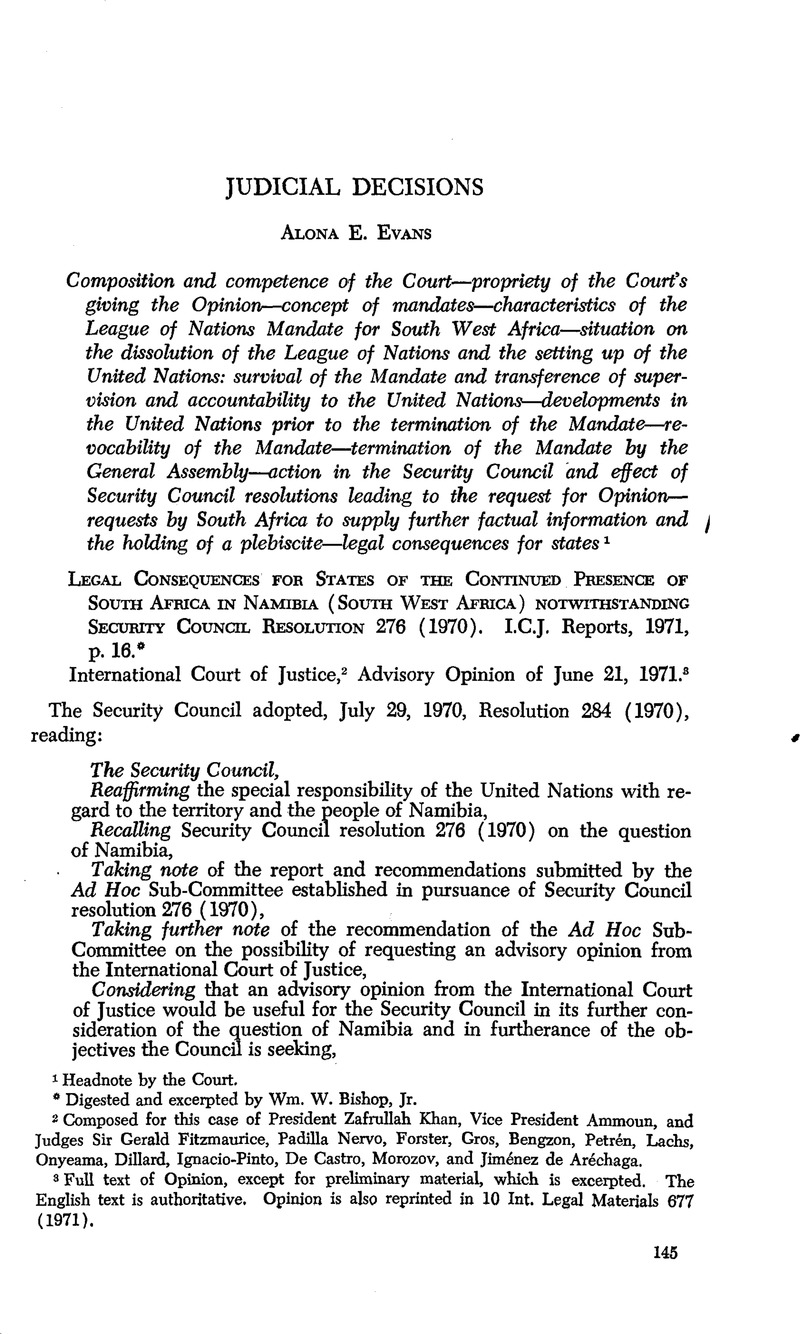Article contents
Legal Consequences for States of the Continued Presence of South Africa in Namibia (South West Africa) Notwithstanding Security Council Resolution 276 (1970)*
Published online by Cambridge University Press: 28 March 2017
Abstract

- Type
- Judicial Decisions
- Information
- Copyright
- Copyright © American Society of International Law 1972
Footnotes
Digested and excerpted by Wm. W. Bishop, Jr.
References
1 Headnote by the Court.
2 Composed for this case of President ZafruUah Khan, Vice President Ammoun, and Judges Sir Gerald Fitzmaurice, Padilla Nervo, Forster, Gros, Bengzon, Petrén, Lachs, Onyeama, Dillard, Ignacio-Pinto, De Castro, Morozov, and Jiménez de Aréchaga.
3 Full text of Opinion, except for preliminary material, which is excerpted. The English text is authoritative. Opinion is also reprinted in 10 Int. Legal Materials 677 (1971).
4 With the exception of SW. Africa, all the various mandated territories—apart of course from those that had become, or became, sovereign independent States—were placed under United Nations trusteeship. This did not by any means take place all at once,—but eventually SW. Africa was the only one to retain mandated status. However, as the Court found in its Advisory Opinion of 1950 concerning the International Status of South West Africa (I.C.J. Reports 1950, at p. 144), the mandatories were not under any legal obligation to place mandated territories under the trusteeship system. [Judge Fitzmaurice’s footnote.]
5 It appears that none of the mandatories rendered reports to the United Nations in the interval (which could be as much as about two years) before the mandated territory was converted into a trust territory or, in some cases, became independent. [Judge Fitzmaurice’s footnote.]
- 2
- Cited by




